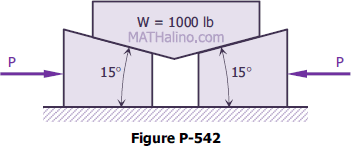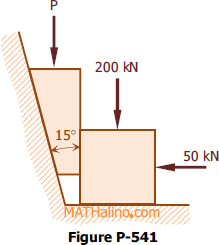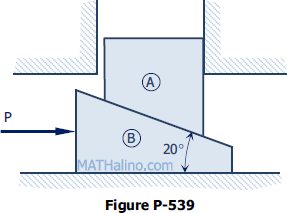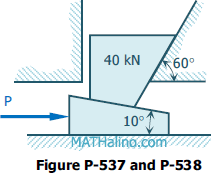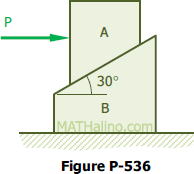Problem 544 | Friction on Wedges
Problem 544
The block A in Fig. P-544 supports a load W and is to be raised by forcing the wedge B under it. If the angle of friction is 10° at all surfaces in contact, determine the maximum wedge angle α that will give the wedge a mechanical advantage; i.e., make P less than the weight W of the block.

- Read more about Problem 544 | Friction on Wedges
- Log in to post comments


